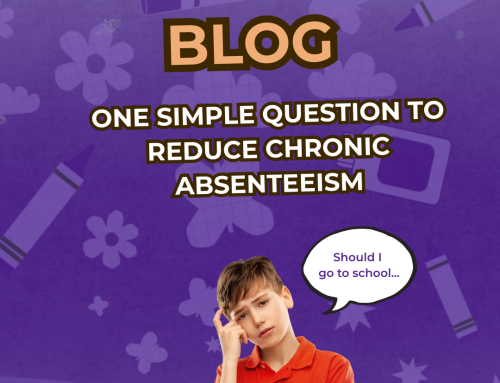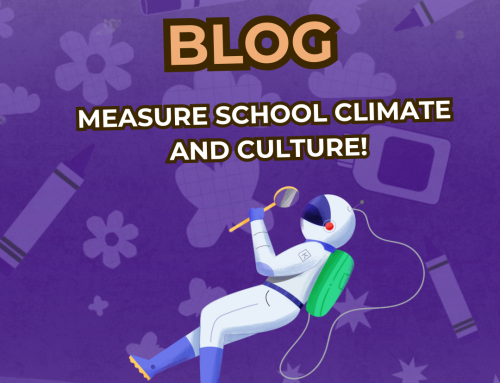58% of Teachers Are Thinking of Quitting: Here’s How We Can Stop the Teacher Burnout Crisis
A conversation with Dr. Chris Balow reveals the shocking truth about teacher burnout and a path forward

I knew I was suffering from teacher burnout. My hands were shaking. “Hello, why are you calling at 6:30 a.m.?” I had to explain to my principal that I couldn’t come in again. My doctor had diagnosed me with acute stress.
I was dealing with constant behavioral challenges in my classroom and getting little support. On top of that, I was teaching full time, tutoring in the afternoons, finishing my degree, and volunteering as a suicide counselor in my spare time.
I kept telling myself I was just building a better future.
But I was burnt out.
The Teacher Burnout Crisis Hiding in Plain Sight
When psychologist Dr. Chris Balow began researching teacher attrition during the early days of COVID, he uncovered a truth that should alarm every parent, educator, and community member: we have a crisis: Teacher Burnout
“When I dug into the research around burnout,” Dr. Balow explains, “it really mirrors clinical depression. In terms of symptoms, there’s very little difference.”
Read that again. The exhaustion, cynicism, and despair we casually dismiss as “teacher burnout” is actually a condition that shares striking similarities with clinical depression. And it’s one of the most widespread forms of burnout across all professions, on par with or exceeding levels found in healthcare, law enforcement, and other high-stress roles.
Here’s the staggering reality: At any given moment, roughly 58% of teachers are considering leaving the profession. (Escalera 2025)
But here’s what makes this crisis even more insidious—it’s not just happening to classroom teachers. Bus drivers, cafeteria workers, principals, superintendents… the epidemic of burnout is consuming everyone who works in our schools.
The Domino Effect That’s Crushing Our Schools
Dr. Balow’s research reveals something most people don’t realize: teacher burnout creates a devastating domino effect that ripples through entire school systems.
When teachers burn out, they become less effective. When they leave, remaining teachers must pick up the slack, increasing their workload and stress levels. This pushes more teachers toward burnout, creating what Dr. Balow calls “a downward spiral” that can cripple entire districts.
The Five Warning Signs We’re All Missing
Through his groundbreaking eBoss survey, Dr. Balow identified five key domains that reveal when educators are in crisis:
1. Emotional Exhaustion
It starts innocently enough. “I’m just tired,” teachers say. “I’m working so hard.” But this isn’t ordinary fatigue—it’s the bone-deep exhaustion that makes getting through each day feel like climbing a mountain.
2. Depersonalization – When Teachers Stop Caring
Perhaps most heartbreaking is when caring educators begin to disconnect from their students. They lose patience, stop forming deep relationships, and start blaming kids for their problems. The very thing that drew them to teaching—connecting with young people—begins to fade.
3. Lost Professional Efficacy – The Confidence Spiral
Teachers start questioning their abilities. “Others are more effective than me,” they think. Success feels impossible, and they begin to doubt everything they once knew about their craft.
4. Cynicism – The Poison in the Well
Negativity pervades everything. Teachers make fun of administrators, avoid volunteering for school activities, and lose trust in colleagues. The collaborative spirit that makes great schools work simply dies.
5. Lost Resilience – When Breaking Points Become Permanent
In healthy professionals, challenges are temporary setbacks. In burned-out educators, every problem feels insurmountable. They can’t bounce back because they have nothing left to bounce back with.
Sound familiar? If you’re an educator reading this, you might recognize yourself. If you’re a parent or community member, you might recognize teachers you know.
The Solution: It’s Not What You Think
How to prevent teacher burnout in your district
Here’s where most discussions about teacher retention go wrong. We focus on pay (which matters, but ranks lower than you’d expect on reasons teachers leave) or we offer superficial solutions.
Dr. Balow’s research points to something far more systematic and, ultimately, more hopeful: We can fix this, but it requires a multi-pronged approach that addresses the root causes, not just the symptoms.
The Four Pillars of Real Change
- Mental Health Support That Actually Works. Schools need to provide cognitive behavioral therapy training, mindfulness programs, and practical tools that help educators build resilience before they hit the breaking point.
- Instructional Coaching That Creates Community. “The evidence is very clear,” Dr. Balow notes. Quality instructional coaching—especially for teachers in their first five years—doesn’t just improve teaching; it creates the collegial relationships and support systems that keep educators engaged and growing.
- Positive Behavior Systems That Transform School Climate. Here’s a shocking fact: Student behavior and discipline issues are often the #1 reason teachers leave the profession. But schools that implement systematic positive behavior intervention and support (PBIS) see dramatic improvements in school climate, relationships, and teacher retention.
- Administrative Leadership That Empowers. Teachers need principals and superintendents who support them, empower them in their classrooms, and involve them in school improvement efforts. Dr. Balow notes, “You really need the support of your school and district leaders.”
The Structural Solution to Teacher Burnout
Schools with low teacher attrition rates share one critical characteristic: high structure. Everyone knows what’s expected, who does what, and how things work. There are clear systems for classroom management, student behavior, and parent engagement.
“People love structure,” Dr. Balow explains, “because it gives you known values and there aren’t surprises, there aren’t things that are going to knock you off kilter.”
The ROI of Saving Teachers
Let’s talk money for a moment. Teacher turnover costs between $12,000 and $25,000 per teacher, depending on district size. For a large district losing 10+ teachers per year, that’s well over $250,000 in direct costs, not counting the immeasurable cost of institutional knowledge walking out the door and the learning disruption for students.
Every dollar invested in teacher retention and well-being pays dividends in reduced turnover costs, improved student outcomes, and stronger school communities.
Schools with high turnover rates are simply less effective. Constantly shifting in new people disrupts relationships, continuity, and the collaborative culture that makes great education possible.
A Tool for Change: The eBoss Survey (Educator Burnout Syndrome Scale)
Dr. Balow’s eBoss survey isn’t just another assessment—it’s a diagnostic tool that helps schools understand exactly where their educators are struggling and track the effectiveness of interventions over time.
The survey should be administered quarterly by district leadership teams (including mental health professionals) to catch problems early and measure progress. Think of it like taking the temperature of your school’s culture—you can’t fix what you can’t measure.
But here’s the crucial part: A survey is only as good as the action it inspires. Schools that see concerning results need to act quickly with targeted interventions, whether that’s providing high-quality PD, improving administrative support, or implementing behavior management systems.
The eBoss survey is available on Kelvin’s survey platform.
The Choice Before Us
We stand at a crossroads. We can continue treating teacher burnout as an individual problem, offering surface-level solutions while watching passionate educators leave in droves. Or we can recognize this for what it is: a systemic crisis that requires systematic solutions.
The students in our classrooms today will inherit the world we’re building. The question is: Will we give them teachers who are thriving, supported, and passionate about their work? Or will we continue to watch the profession that shapes every other profession slowly burn itself out?
Dr. Balow’s research shows us the path forward. The tools exist. The knowledge is there.
What happens next is up to us.
👉 To bring eBoss + Kelvin to your district, contact us today or book a discovery call.
By Ari Poyurs & Dr Chris Balow
Dr. Chris Balow is a former school psychologist and district administrator with over 40 years in education. His work, including the eBoss survey and strategic planning platform (Beacon), helps schools diagnose root issues and build supportive, sustainable systems. Learn more at VoyagerEd.
Kelvin Education helps districts capture real-time insights on educator and student well-being through customizable surveys and strategic analytics. Learn more or get started at kelvin.education.
References:
MyPerfectResume. (2025, June 4). *9 in 10 teachers consider quitting in 2025: The hidden cost of passion.* https://www.myperfectresume.com/career-center/interviews/research/teachers-quitting-2025
Reinke, W. M., Herman, K. C., Stormont, M., & Ghasemi, F. (2025). Teacher stress, coping, burnout, and plans to leave the field: A post‑pandemic survey. *School Mental Health, 17*(1), 32–44. https://doi.org/10.1007/s12310-024-09738-7




